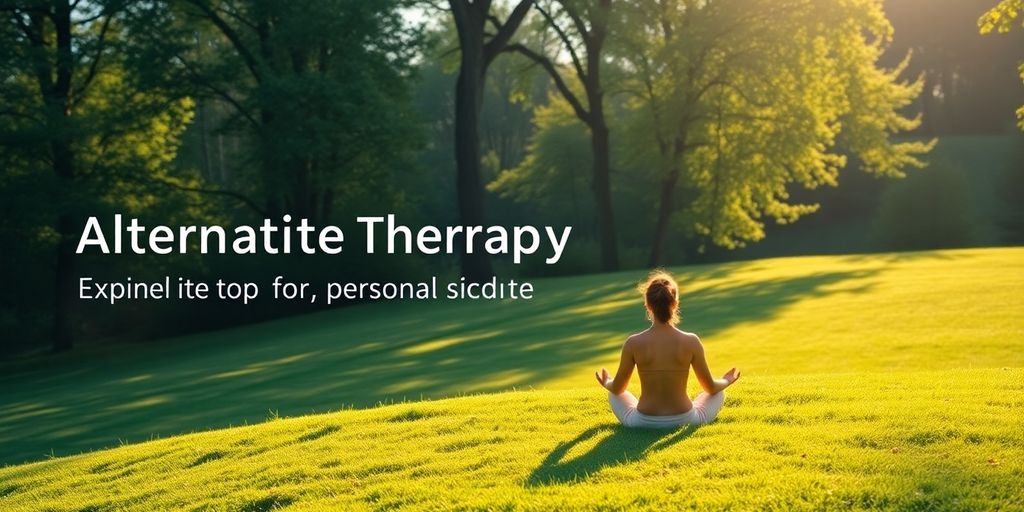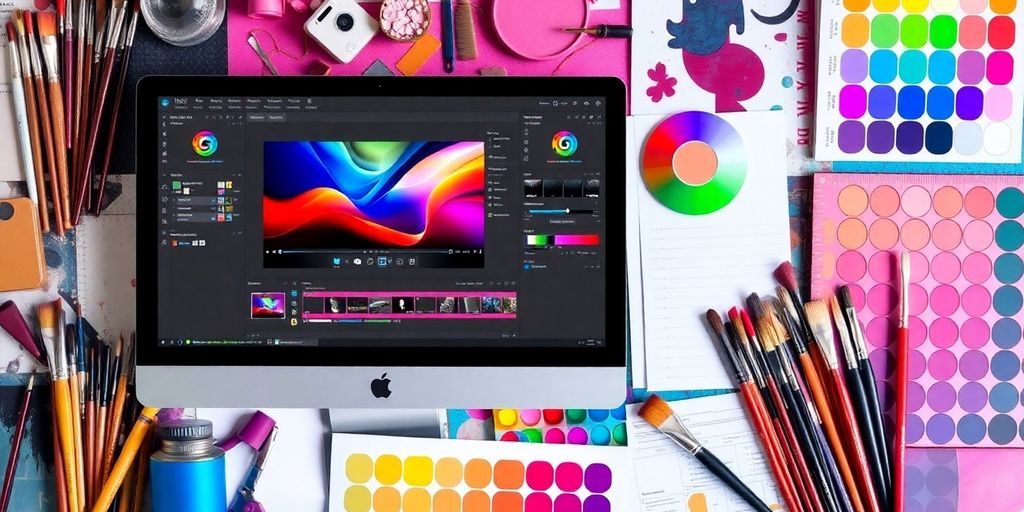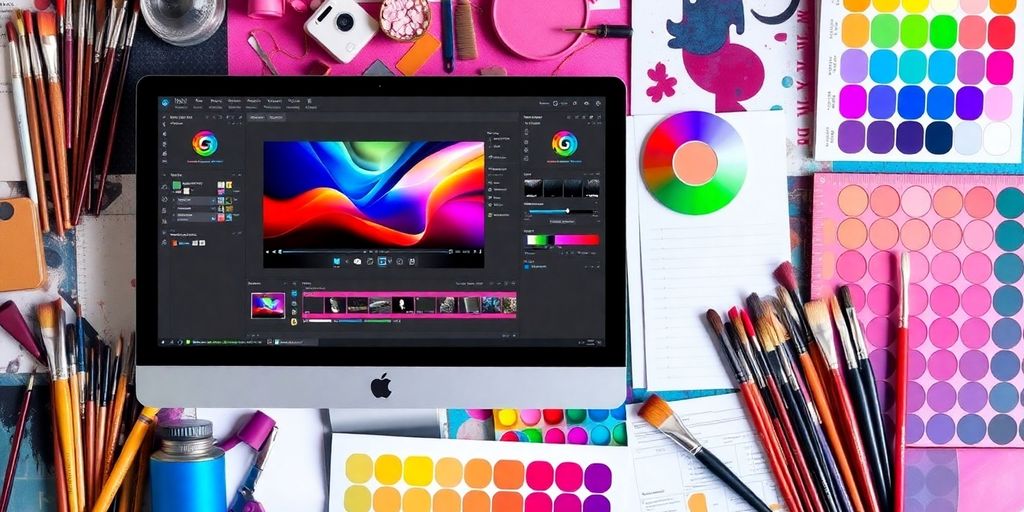Therapy Alternatives: Mental Wellness Resources & Support

When it comes to mental health, therapy isn’t the only option out there. Many people look for alternatives for various reasons, like cost or personal preference. Luckily, there are plenty of resources and support systems available that can help improve mental wellness without traditional therapy. This article explores different alternatives, from apps to creative outlets, that can support your mental health journey.
Key Takeaways
- Mental health apps can provide support and resources at little to no cost.
- Complementary therapies like yoga and meditation can help reduce stress and anxiety.
- Building a support network with friends and family is essential for mental well-being.
- Physical activities, including exercise and outdoor adventures, can boost mood and reduce symptoms.
- Creative outlets such as journaling, art, and music can be therapeutic and help express emotions.
Mental Health Apps
So, you’re thinking about therapy alternatives? Mental health apps are a great place to start. There are tons of them out there, and many are even free! They can be a convenient way to get some support when you need it.
Mindfulness and Meditation Tools
Okay, so mindfulness and meditation apps are super popular, and for good reason. They can really help you chill out and get centered. I’ve tried a few, and some are definitely better than others. It’s all about finding one that clicks with you. Some apps offer guided meditations, which are great if you’re just starting out. Others have timers and ambient sounds to help you create your own meditative space.
Cognitive Behavioral Therapy Apps
CBT apps? Yeah, these are interesting. They’re designed to help you identify and change negative thought patterns. It’s like having a therapist in your pocket, but, you know, not really. They often include exercises and tools to help you challenge your thoughts and behaviors. If you’re dealing with anxiety or depression, these apps might be worth checking out. Look for apps that offer cognitive behavioral therapy techniques.
Mood Tracking Applications
Mood trackers are pretty straightforward. You log your mood each day, and over time, you can start to see patterns. This can be really helpful for understanding what triggers your ups and downs. Some apps also let you track other things, like sleep, exercise, and diet, which can give you a more complete picture of your overall well-being. Plus, some of them have pretty graphs, which is always a bonus.
I’ve found that consistently using a mood tracker can be a real eye-opener. It’s not a magic bullet, but it can definitely help you become more aware of your emotional state and identify potential areas for improvement.
Complementary Therapies
Complementary therapies are treatments used alongside standard medical care. They’re not meant to replace your doctor’s advice, but to work with it. Think of them as extra tools in your mental health toolkit. It’s worth noting that while many people find them helpful, the scientific evidence supporting their effectiveness can vary. Always chat with your healthcare provider before starting any new therapy, especially if you’re already on medication or have underlying health conditions.
Meditation Practices
Meditation is a great way to calm your mind and reduce stress. It involves training your mind to focus and redirect your thoughts. There are tons of different types, so you can find one that fits you. I’ve been trying guided meditations lately, and they’re surprisingly effective at helping me unwind after a hectic day. You can find free resources online, or apps that offer structured programs. It’s all about finding what resonates with you.
Yoga and Movement Therapies
Yoga combines physical postures, breathing techniques, and meditation. It’s not just about flexibility; it’s about connecting your mind and body. Movement therapies, like dance, can also be incredibly beneficial. They allow you to express emotions and release tension through physical movement. I’ve heard great things about yoga for anxiety, and I’m thinking of trying a class soon. It’s a fun way to get some exercise and boost your mood at the same time.
Art and Music Therapy
Art and music therapy use creative expression to improve mental and emotional health. You don’t need to be a professional artist or musician to benefit. It’s about the process, not the product. I’ve always found that music as a healing tool helps me process my emotions. Whether it’s painting, drawing, playing an instrument, or simply listening to music, these therapies can provide a healthy outlet for self-expression.
I’ve found that incorporating even small amounts of complementary therapies into my routine can make a big difference. It’s about finding what works for you and being consistent. Don’t be afraid to experiment and see what helps you feel your best.
Support From Peers, Friends, and Family

It’s easy to underestimate the power of having people around you who care. I know I do sometimes! But seriously, studies show that having strong social connections is super important for your mental health. It’s not just about having someone to hang out with; it’s about feeling like you belong and having people you can count on when things get tough.
Importance of Social Connections
Think about it: when you’re feeling down, who do you turn to? Probably your friends or family, right? These relationships provide a sense of purpose and belonging. They offer a safe space to share your feelings and get support. It’s like having a built-in safety net. Plus, helping others can actually make you feel better too. It’s a win-win!
Peer Support Organizations
Sometimes, talking to people who really get what you’re going through can make all the difference. That’s where peer support organizations come in. These groups connect you with others who have similar experiences, whether it’s dealing with anxiety, depression, or something else entirely. It’s a chance to share your story, learn from others, and realize you’re not alone. For example, NAMI Southeast Louisiana offers support groups and resources.
Building a Support Network
Okay, so how do you actually build a support network? It’s not always easy, but it’s worth the effort. Here are a few ideas:
- Reconnect with old friends. Shoot them a text or give them a call. You might be surprised at how much you have in common.
- Join a club or group that interests you. It’s a great way to meet people who share your passions.
- Volunteer for a cause you care about. You’ll be making a difference and meeting like-minded individuals.
- Be open to new friendships. You never know where you’ll find your next great friend.
Building a solid support system takes time and effort, but it’s an investment in your well-being. Don’t be afraid to reach out and connect with others. You deserve to have people in your life who care about you and support you through thick and thin.
Physical Activity and Exercise

It’s easy to underestimate the power of moving your body. I know I do! But honestly, getting active can be a game-changer for your mental state. It’s not just about physical health; it’s deeply connected to how you feel emotionally and mentally. Think of it as hitting a reset button for your brain.
Benefits of Regular Exercise
Okay, so we all know exercise is good, but let’s get specific. Regular physical activity releases endorphins, which have mood-boosting effects. It can also reduce stress, improve sleep, and boost self-esteem. It’s like a natural antidepressant, without the side effects for many people. Plus, it gives you a sense of accomplishment, which is always a win. A large 2018 study found that individuals who exercised experienced around 43% fewer days of poor mental health per month than those who did not exercise.
Here’s a quick rundown:
- Reduces symptoms of anxiety and depression
- Improves sleep quality
- Increases energy levels
- Enhances focus and concentration
Yoga and Dance for Mental Health
Yoga and dance? Yes, please! These aren’t just workouts; they’re mindful movement practices. Yoga combines physical postures, breathing techniques, and meditation, which can help calm the nervous system and reduce stress. Dance, on the other hand, is a fantastic way to express emotions and release tension. The flow of somatic movements creates additional outlets for expression and emotion, which may bring new insights that might not be as available through language-based talk therapy. Synchronizing with your own physical sensations may help your physical and mental health.
Outdoor Activities and Nature
Get outside! Seriously, even a short walk in the park can do wonders. Being in nature has been shown to reduce stress hormones and increase feelings of well-being. It’s like a mini-vacation for your mind. Consider forest bathing for a slow, mindful immersion in nature.
Spending time outdoors can be incredibly therapeutic. It provides a break from the stresses of daily life and allows you to reconnect with yourself and the world around you. Even just noticing the small details – the way the sunlight filters through the trees, the sound of birds singing – can be incredibly grounding.
Creative Outlets for Expression
Sometimes, talking things out just doesn’t cut it. That’s where creative expression comes in. It’s about finding ways to communicate and process your feelings without necessarily using words. It can be super helpful when you’re feeling stuck or overwhelmed. Let’s explore some options.
Journaling for Mental Clarity
Journaling isn’t just for angsty teenagers! It’s a legit tool for boosting your mental well-being. Writing down your thoughts and feelings can help you sort through them, identify patterns, and gain a better understanding of yourself. It’s like having a conversation with yourself, but on paper. You can try different approaches, like free writing, gratitude journaling, or even just jotting down a few thoughts before bed. It’s a great way to practice journaling techniques and unwind.
Art Therapy Techniques
Art therapy is more than just doodling. It’s a therapeutic approach that uses creative techniques like painting, drawing, and sculpting to help people explore their emotions and improve their mental health. You don’t have to be a skilled artist to benefit from it. The focus is on the process, not the product. It’s about expressing yourself in a non-verbal way and finding new insights through creative expression. Some people find that it helps them to release pent-up emotions or to gain a new perspective on their problems.
Music as a Healing Tool
Music has a powerful effect on our emotions. Listening to music can lift your mood, reduce stress, and even ease pain. But music can also be used as a more active form of therapy. Playing an instrument, singing, or even just creating a playlist of songs that resonate with you can be a way to express yourself and process your feelings. It’s a great way to connect with your emotions and find some peace. Music therapy is a valuable method of support for people living with mental illness and mental disorders.
Animal-Assisted Support
Okay, so maybe traditional therapy isn’t your thing, or maybe you’re just looking for something extra to boost your mental well-being. Have you ever considered animal-assisted support? It’s more than just having a pet (though that’s awesome too!). It’s about intentionally using the human-animal bond to promote healing and wellness. I know it sounds a little out there, but hear me out.
Benefits of Pet Therapy
Pet therapy can seriously lower stress levels. Think about it: petting a dog, cat, or even just watching fish swim can be incredibly calming. It’s not just a feeling; studies have shown that interacting with animals can decrease cortisol (the stress hormone) and increase endorphins (the feel-good chemicals) in your brain. Plus, it’s a great way to get your mind off things. I mean, who can worry about bills when there’s a fluffy cat demanding attention? For those facing health challenges, service dogs can be a game changer, offering both emotional and practical support.
Emotional Support Animals
Emotional Support Animals (ESAs) are animals that provide comfort and support to individuals with mental or emotional disabilities. Unlike service animals, ESAs don’t need specific training to perform tasks. Their presence alone is therapeutic. Getting an ESA usually involves a letter from a licensed mental health professional. It’s important to know that ESAs have specific rights, especially when it comes to housing, but those rights aren’t as extensive as those for service animals. It’s a bit of a gray area, so do your research.
Therapy Animals in Community Settings
Beyond individual pets and ESAs, therapy animals often visit hospitals, nursing homes, schools, and even disaster areas to provide comfort and support to groups of people. These animals are specially trained and certified to interact with a variety of individuals in different settings. It’s amazing to see the impact they have. I remember volunteering at a local hospital where a golden retriever would visit patients. The smiles on their faces were priceless. It’s a simple thing, but it can make a world of difference.
Sometimes, the best therapy comes from a furry friend who just wants to cuddle. They don’t judge, they don’t offer unsolicited advice, and they’re always happy to see you. It’s a pretty sweet deal, if you ask me.
Mindfulness and Spiritual Practices
Mindfulness-Based Cognitive Therapy
Mindfulness-Based Cognitive Therapy (MBCT) is a cool combo of mindfulness and cognitive behavioral therapy (CBT). Basically, it helps you become more aware of your thoughts and feelings so you can handle them better. It’s especially good for people who have a history of depression.
MBCT courses usually run for 8 weeks, with 2-hour group sessions. You might also find mindfulness courses through self-help books, apps, or even YouTube. It’s all about finding what works for you. The National Institute of Health and Care Excellence (NICE) recommends MBCT to help people with a history of depression. Alan Watts emphasizes the significance of stillness and presence in experiencing life fully.
Energy Healing Techniques
Energy healing is based on the idea that your body’s energy affects your mental and physical health. Reiki is a popular type where a therapist puts their hands on or above your body to channel energy. You stay dressed and can sit or lie down. Research is still limited, but some studies suggest it might help with depression, stress, anxiety, and even insomnia. Some communities also use spirit-based healing practices.
Spirituality and Mental Wellness
Spirituality can play a big role in mental wellness for some people. It’s about finding meaning and connection, whether through religion, nature, or personal beliefs. It can provide a sense of hope, purpose, and community, which are all good for your mental health.
Finding a spiritual practice that resonates with you can be a powerful tool for coping with stress and improving your overall well-being. It’s not about converting to a specific religion, but about exploring what gives your life meaning and connecting with something bigger than yourself.
Here are some ways spirituality can help:
- Providing a sense of purpose and meaning.
- Offering a supportive community.
- Helping you develop coping mechanisms.
- Encouraging self-reflection and growth.
Wrapping It Up
In the end, finding the right support for your mental health can take some time and experimentation. Therapy isn’t the only option out there. You’ve got a bunch of alternatives that might fit your needs better, whether it’s getting active, diving into art, or just spending time with pets. Apps can also be a handy tool to keep you on track. Remember, it’s all about what works for you. Don’t hesitate to reach out to friends or family for support, too. They can be a great resource. Just know that you’re not alone in this, and there are plenty of paths to feeling better.
Frequently Asked Questions
What are mental health apps?
Mental health apps are tools you can use on your phone or tablet to help with things like stress, anxiety, and mood tracking. They can offer exercises, tips for mindfulness, and even guided meditations.
How can exercise help my mental health?
Exercise is great for your brain! It can boost your mood, reduce anxiety, and help you feel more energized. Even simple activities like walking or dancing can make a difference.
What is art therapy?
Art therapy uses creative activities like drawing, painting, or music to help people express their feelings. It can be a fun way to understand emotions and reduce stress.
Why is social support important?
Having friends and family around can make you feel less lonely and more supported. Talking to someone you trust can help you cope with tough times.
What is pet therapy?
Pet therapy involves using animals to help people feel better. Pets can provide comfort and companionship, which can be really helpful for mental health.
How does mindfulness help with mental wellness?
Mindfulness is about being present and aware of your thoughts and feelings without judgment. It can help reduce stress and improve your overall mood.








Responses